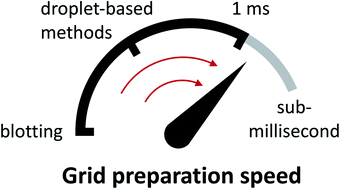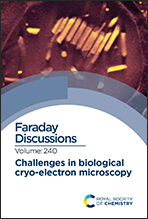Towards sub-millisecond cryo-EM grid preparation
Abstract
Sample preparation is still a significant problem for many single particle cryo-EM workflows and our understanding and developments in the area lag behind that of image processing and microscope design. Over the last few years there has been growing evidence that many of the problems which occur during sample preparation are during the time the sample resides within the thin film created during the conventional blotting process. In parallel, faster grid preparation approaches have been developed for time-resolved cryo-EM experiments allowing for non-equilibrium intermediates to be captured on the ms timescale. Therefore, an important question is how fast can we prepare suitable grids for imaging by cryo-EM and how much does this mitigate the problems observed in sample preparation? Here we use a novel approach which has been developed for time-resolved studies to produce grids on an estimated sub-1 ms timescale. While the method comes with its own challenges, a 3.8 Å reconstruction of apoferritin prepared with the ultrafast method shows that good resolutions can be achieved. Although several orders of magnitude faster than conventional approaches we show using a ribosome sample, that interactions with the air–water interface cannot be avoided with preferred orientations still present. Therefore, the work shows that faster reactions can be captured but poses the question whether speed is the answer to problems with sample preparation.

- This article is part of the themed collection: Challenges in biological cryo electron microscopy


 Please wait while we load your content...
Please wait while we load your content...